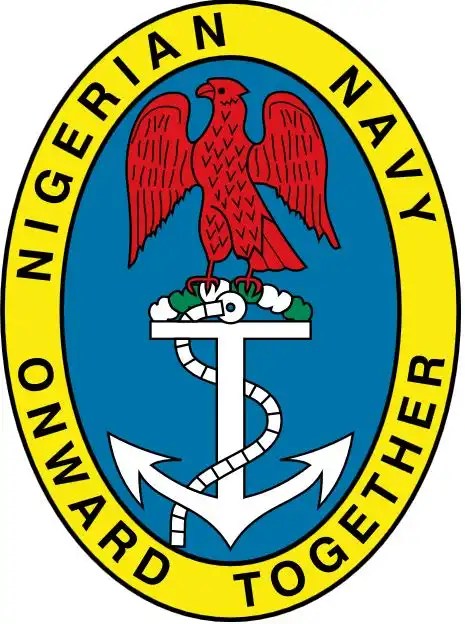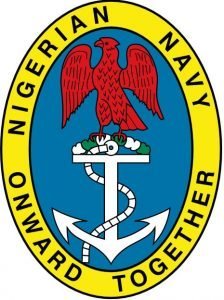
Looking for information on the Nigerian Navy ranks and their salaries? We got you covered. Nigeria is one of the countries that respects and takes care of its armed forces which is why many Nigerians are looking for a means to get into any one of the armed forces not only defend their country but to also have financial security.
The Nigerian Navy salary structure is based on the Consolidated Naval Salary Structure (CONNESS) which was introduced in 2017. The salary structure is divided into two categories: officers and ratings.
In this article, we are going to look at the Nigerian navy ranks, symbols, and their salaries.
History of The Nigerian Navy
Nigeria happens to have one of the largest naval forces in the African continent consisting of thousands of personnel. Its naval force is known as the Nigerian Navy. The Nigerian Navy is a brand of the Nigerian Armed Forces and its origin can be traced to the Marine Department of the Royal Navy.
The Nigerian Navy also owes its origin to the Nigerian Marine which was established in 1914. The unitary force was previously known as the Northern Nigerian Marine which served the Northern part of the country and the Southern Nigerian Marine which served the southern part of the country. Both forces combined to become one after the amalgamation of the Northern and Southern parts of Nigeria in 1914.
In 1959, a year before Nigeria gained her independence, the Royal Nigerian Navy was established after Queen Elizabeth of England granted permission for the force to use the title. In 1963, after Nigeria had gained her independence and was proclaimed a republic, the title was changed to the “Nigerian Navy”.
The Nigerian Navy was transformed as its original constitution of 1958 was repealed and reformed in 1964. The new law tasked the Navy with the naval defense of Nigeria. Others duties assigned to the Navy in the Navy of Act of 1964 include; training officers in naval duties, assisting in the enforcement of customs laws, and essentially routine functions that are assigned to every other Navy in the world.
The constitution was once again re-defined due to pressure from the naval leadership on the political government. In 1993, the Nigerian Navy was assigned new functions under a new law known as the Armed Forces Decree 105 (presently referred to as the Armed Forces Act). This new law which was incorporated as part of the 1999 Constitution saw the Nigerian Navy receive military and constabulary roles.

Nigerian Navy Ranks and Their Salary Structure 2024
Below are the current salary structures and rank in the Nigerian Navy.
Admiral (N1,358,595 Per Month)
The Admiral is technically the highest rank an officer can attain in the Nigerian Navy. However, there is a higher rank known as the “Admiral of the fleet” which is only conferred as an honorary rank. The Admiral of the fleet is actually the highest rank in the Nigerian Navy but it is rarely conferred on any officer which is why it does not have a salary structure. The rank of Admiral is equivalent to the rank of General in the Nigerian Army and the Air Chief Marshal in the Nigeria Air Force. Overall, the Admiral is the highest paid officer in the Nigerian Navy.
Salary Per Month: N1,358,595
Salary Per Annum: N16,303,140
Vice-Admiral (N1,113,602 Per Month)
The Vice-Admiral is the second in command and the second most powerful officer in the Nigerian Navy. This rank is equivalent to the Vice President of the Federal Republic of Nigeria, the Lieutenant General in the Nigerian Army, and the Air Vice Marshall in the Nigerian Air Force. The Vice-Admiral is the second-highest-paid officer in the Nigerian Navy.
Salary Per Month: N1,113,602
Salary Per Annum: N13,363,229
Rear Admiral (N1,003,245 Per Month)
The Real Admiral rank is sometimes referred to as flag officer and is the most junior officer among the “Admiralty ranks”. The Rear Admiral is also the third-in-command and the third highest-paid officer in the Nigerian Navy.
The Rear Admiral is assigned various important duties which include administrating the logistics command of the Nigerian Navy.
Salary Per Month: N1,003,245
Salary Per Annum: N12,038,945
Commodore (Cdre) (N615,488 Per Month)
The Commodore rank is conferred on an officer who commands more than one ship at a time. This rank is superior to the rank of a navy captain and below the rank of a rear admiral. It is equivalent to the rank of Air Commodore in the Nigerian Air Force and Brigadier in the Nigerian Army.
Salary Per Month: N615,488
Salary Per Annum: N7,385,856
Captain (N309,655 Per Month)
The Captain rank is given to an officer who commands the largest ships in the navy. These ships could be ships of cruiser size or larger. The rank is equivalent to the army rank of a colonel.
Salary Per Month: N309,655
Salary Per Annum: N3,715,859
Commander (N281,674 Per Month)
The rank of Commander is quite similar to that of the Captain, however, they are not to be confused as one. The Commander is an officer who controls a large ship in the Nigerian Navy. The ship would be too large to be commanded by a Lieutenant Commander or too small to be commanded by a Captain. The Commander rank is equivalent to the Wing Commander in the Nigerian Air Force and the rank of Lieutenant Colonel in the Nigeria Army.
Salary Per Month: N281,674
Salary Per Annum: N3,380,086
Lieutenant Commander (LCdr) (N230,000 Per Month)
The Lieutenant Commander is a senior executive officer (second-in-command) on a warship or a commanding officer of a smaller ship. The rank is equivalent to the rank of Squadron Leader in the Nigerian Air Force and the rank of Major in the Nigerian Army.
A Lieutenant Commander is quivalent to the Wing Commander in the Nigerian Air Force and the rank of Lieutenant Colonel in the Nigeria Army.
Salary Per Month: N230,000
Salary Per Annum: N2,760,000
Lieutenant (N210,674 Per Month)
Lieutenant is the rank just below the rank of the Lieutenant Commander and the rank above the sub-lieutenant. This is rank is typically the most senior of junior officer ranks in the Nigerian Navy.
Salary Per Month: N210,674
Salary Per Annum: N2,528,088
Sub-Lieutenant (N181,500 Per Month)
The Sub-Lieutenant is superior to the Midshipman and inferior to the Lieutenant. The rank is equivalent to the Lieutenant in the Nigerian Army or Flying Officer in the Nigerian Air Force. All fresh graduates from the Nigerian Defence Academy (NDA) automatically become a Sub-Lieutenant upon graduation from the military school.
The salary of a Sub-Lieutenant in the Nigerian Navy is not bad at all.
Salary Per Month: N181,500
Salary Per Annum: N2,178,000
Midshipman (N102,000 Per Month)
The midshipman is the junior-most rank in the Nigerian Navy. The rank is conferred to an officer who is an experienced seaman. The rank is just above the Officer cadet, however, it is the junior-most rank for commissioned officers.
Salary Per Month: N102,000
Salary Per Annum: N1,224,000
Officer Cadet (N90,500 Per Month)
Officer Cadet is an officer who is still in training to become a commissioned officer in the Nigerian Navy. This rank has a similar name and function in the Nigerian Army, however, an officer at such level is referred to as a Flight Cadet in the Nigerian Air Force.
Salary Per Month: N90,500
Salary Per Annum: N1,086,000
Types of Officers in the Nigerian Navy
There are basically two types of officers in the Nigerian Navy which are; commissioned and non-commissioned officers.
Commissioned Officers
Commissioned officers are naval officers who possess a degree from a higher institution before joining the Nigerian Navy. They receive training in areas of leadership, military occupational specialty, and management. They are superior to the non-commissioned officer and earn more on the salary structure
Nigerian Navy Ranks For Commissioned Officers
- Admiral of the Fleet
- Admiral
- Vice Admiral
- Rear Admiral
- Commodore
- Captain
- Commander
- Lieutenant Commander
- Lieutenant
- Sub-Lieutenant
- Midshipman
Nigerian Navy Salary Structure For Commissioned & Non-Commissioned Officers 2024
Non-commissioned officers are naval officers who do not possess a degree from a higher institution to enlist in the Nigerian Navy.
For officers, the Nigerian Navy salary structure is as follows:
- Admiral: ₦1,358,595 monthly
- Vice Admiral: ₦1,113,602 monthly
- Rear Admiral: ₦1,003,245 monthly
- Commodore: ₦615,488 monthly
- Captain: ₦309,560 monthly
- Commander: ₦261,654 monthly
- Lieutenant Commander: ₦190,685 monthly
- Lieutenant: ₦166,242 monthly
- Sub-Lieutenant: ₦120,375 monthly
- Mid-Shipman: ₦68,358 monthly
For ratings, the Nigerian Navy salary structure is as follows:
- Warrant Officer: ₦80,000 – ₦90,000 monthly
- Petty Officer: ₦45,000 – ₦75,000 monthly
- Leading Rating: ₦35,000 – ₦55,000 monthly
- Able Rating: ₦30,000 – ₦45,000 monthly
- Ordinary Rating: ₦20,000 – ₦35,000 monthly
It’s important to note that these figures are subject to change and may vary based on rank, experience, and other factors.
Command Structure of the Nigerian Navy
The Nigerian Navy consists of 5 commands headed by Flag Officers Commanding and 5 autonomous units. These commands are made up of operational commands which are responsible for the policing and protection of the nation’s maritime environment.
The Naval Headquarter (NHQ)
The Naval Headquarters (NHQ) is located in the nation’s capital along Mohammadu Buhari Way, Garki Abuja. It is the policy-making and administrative organ of the Nigerian Navy. The Nigerian Navy is headed by the Chief of the Naval Staff (CNS) who commands and directs the Nigerian Navy.
The Chief of the Naval Staff
The Chief of the Naval Staff is the highest ranking military officer of the Nigerian Navy and the position is only occupied by the most senior commissioned officer. The Chief of the Naval Staff reports to the Chief of Defence Staff and is appointed by the Commander-in-Chief of the Armed Forces of Nigeria (The President of Nigeria).
The Chief of the Naval Staff has 8 staff branches including the Office of the Navy Secretary which are headed by Principal Staff Officers (PSOs) of flag rank.
As at 2024 the current Chief of the Naval Staff is Vice Admiral Awwal Zubairu Gambo. He was appointed by President Muhammadu Buhari on the 26th of July, 2021 who is one of the longest serving Chief of the Naval Staff in the history of the Nigerian Navy.
Western Naval Command
Located in Apapa in Lagos, the Western Naval Command is tasked with the protection of the sea and coastal areas along the Nigeria/Benin border.
Eastern Naval command
The Eastern Naval Command has its headquarters in Calabar, it is the second operations command of the Nigerian Navy and is tasked with the protection of the seas areas in Delta State to the Nigerian/Cameroon border.
Central Naval command
The Central Naval Command has its headquarters in Yenagoa in Bayelsa State, it is the third operations command of the Nigerian Navy. The Central Naval Command oversees the Benin River entrance to the Santa Barbara River entrance. This includes the coastal states of Delta, Edo, and Bayelsa, and the landward states.
Naval Training Command (NAVTRAC)
The Naval Training Command is the main body responsible for the coordination of training standards in the Nigerian Navy as directed by the NHQ.
There are various Naval Training Colleges and Units spread all over the country. These training units have specific tasks which are assigned to them. The Sea Training Unit in Lagos is responsible for Sea-based and Safety Sea Training of all Nigerian Navy ships assigned to it. Its colleges, on the other hand, are responsible for the technical and basic training of officers.
Logistics Command
The Headquarters of the Logistics Command is located at Oghara, Delta State. The command is headed by a FOC of the Rear Admiral rank.
Autonomous Units
There are various Autonomous units in the Nigerian navy which oversee the maintenance of Naval ships. One of such units is the Naval Dockyard in Lagos.
Nigerian Navy Air Arm
The Nigerian Navy Air Arm represents the Naval Airforce. It consists of the 101 Squadron which was established in 1985. The squadron operates Agusta and Agusta/Westland Lynx helicopters and is charged with oil protection and anti-smuggling duties.
The Nigerian Navy Fleet
Although the Nigerian Navy Fleet cannot be considered at the best in Africa or the World, it boasts a good number of naval vessels in its fleet. The Nigerian Navy Fleet was revitalized after the dearth of capable naval vessels. The dearth of these operational vessels was due to several years of neglect by various governments which meant the Nigerian Navy couldn’t perform its best to curb crimes on the waters.
However, the increase in maritime crimes like smuggling, oil bunkering, kidnapping, and militancy prompted the need for the Navy fleet to be revitalized and re-energized. Today, it is in a better position than it was in the past.
The Nigerian Navy Fleet consists of all ships, boats, aircraft and other equipment owned and operated by the Nigerian Navy. Among its fleets are long-range patrol cutters, corvettes, fast attack craft/patrol boats, patrol cutters, inshore patrol craft, minesweepers, and several aircraft.
Long-range Patrol Cutters
NNS Thunder (F90), NNS Okpabana (F93)
Corvettes
NNS Centenary (F91), NNS Unity (F92)
Fast Attack Craft / Patrol Boasts
The Nigerian Navy has about 12 patrol crafts, boats, fast attack crafts and defense boasts in its fleet. Among them are; NNS Andoni (P100), NNS Karaduwa (P102), NNS SDBII, NNS Ekpe (P178), NNS Damisa (P179), NNS Agu (P180), NNS Dorina (P101), NNS Siri (P181), amongst others.
Patrol Cutters
NNS Ologbo (A 502), NNS Kyanwa (A 501), NNS Obula (A 504), NNS Nwamba (A 503)
Inshore Patrol Craft
Shaldag MK2 Class Fast Patrol Boat, Manta Class Patrol Boat, Defender Class Boat (RB-S), Arrow Class Patrol Boat, Epenal Security Patrol Boast
Minesweepers
NNS Ohue (M371), NNS Barama (M372)
Aircraft
Agusta A109 Helicopter, Westland Lynx, Aeronautics Aerostar
Special Boat Service
This is a special operations unit in of the Nigerian Navy that enlists only male officers. The unit is charged with surveillance and reconnaissance on littoral and riverine areas. Its duties also include the protection or recovery ships subject to hostile state, offensive action, and maritime counter-terrorism.
Nigerian Navy Uniforms And Their Colors
The Nigerian Navy has several uniforms which represent several functions and mode of operation. These uniforms are of three colors and three functions. The uniforms are also used for different official occasions.
White Uniform
This is the official work uniform of the Nigerian Navy is worn while on administrative duties. The Uniform is also referred to as Liberty Rig.
Blue Uniform
The Blue Uniform is the official working uniform of the Nigerian Navy. The difference between the white and blue uniform is not just the color but also its functions. The blue uniform is worn during strenuous fieldwork.
Camouflage
The Camouflage is worn by Navy Officers when on combined duty with the Nigerian Army. However, the Navy Camouflage is quite different from that of the Nigerian Army as it has a touch of blue and grey-white in several areas.
Nigerian Navy Training
The Nigerian Armed Forces consist of the most elite forces trained to protect and safeguard the peace of the country from foreign and local invaders. To this effect, any individual hoping to join any of the force in the Nigerian Armed Forces must be fully prepared for the strenuous training exercises and discipline that is required to become an officer in the Nigerian Armed Forces.
However, the Nigerian Navy is not known to push its officers to their limits during training. Their training processes are less strenuous compared to the training received by officers in the Nigerian Army. This might be why many individuals prefer to join the Nigerian Navy.
Nonetheless, the training process of the Nigerian Navy is no walk in the park. This is why applicants are subjected to medical screening and fitness tests before being enlisted.
How To Join The Nigerian Navy?
The Nigerian Navy is one of the most respected enforcement agencies in Nigeria. This is why many Nigerians look for possible ways to join the Nigerian Navy and give their quota to the country.
To join the Nigerian Navy, you will have to be on the lookout for their recruitment. The Nigerian Navy normally announces its recruitment exercise on several national and popular TV stations to inform the public.
The Nigerian Navy runs two kinds of recruitment exercises, the general recruitment exercise for its basic courses and a recruitment exercise for the Direct Short Service Course (DSSC).
To apply, you will be required to fill an application on its registration portal at www.joinnigeriannavy.com.
When done, you can submit the application and hold on till they begin announcing the names of the shortlisted candidates. If you are shortlisted, you will be called up to write a test before being fully admitted into the Nigerian Navy. However, you could still read up this comprehensive article on how to apply and gain admission into NDA of which the Nigerian Navy is a part of. It contains all you need in terms of documents, O’Level requirements and all you need to know.
Conclusion
This post though harps on Nigerian Navy salary structure for commissioned and non commissioned officers, Nigerian Navy ranks and symbols, it is also very encompassing, that it, it contains all you need to know about the Nigerian Navy. For example, the history of the Nigerian Navy, how to apply and join the Nigerian Navy and the command structure of the Nigerian Navy.
It is quite an interesting and educative post. Take your time, read through carefully and please note that we are open to questions, opinions and answers from other readers as regards the Salary structure of the Nigerian Navy for 2024 and all other related questions.


